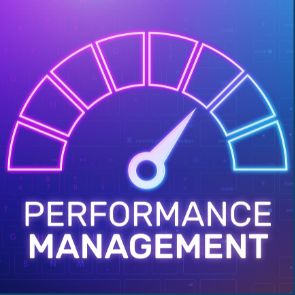Performance Management – Fact or Myth?
Managing performance of employees can be difficult, however providing feedback and support provides an environment for the employee to learn, develop and thrive.
Often what we hear from our clients is they struggle to understand the truth about performance management and what options they have in managing the performance of their employees.

Performance management is not about emphasising weaknesses. Without genuine feedback some employees might fail to learn and thrive. Instead, performance management is about employees feeling and being supported in removing barriers to success, acknowledging their strengths, and clearly identifying future goals.
Fact: The key relationship is between the employee and employer and the style of the performance management discussion. The discussion should be a safe place for the employee to reflect on strengths and development areas and plan for growth.
There is no requirement in the Fair Work Act or elsewhere in legislation that requires an employee to have a support person in any performance discussion.
It is important to note that if an employee asks to have a support person, one should be accommodated.
Fact: An employee who feels well supported is more likely to be a willing participant in the performance management process. A support person can make an employee feel safe in an environment that may otherwise cause them angst.
False! A position description outlines the position requirements which includes related tasks and any duties required to be fulfilled. For this reason, the position description is a great resource in referencing the focus points of a performance improvement plan or highlighting key performance indicators. The performance improvement plan and any performance review should focus directly on the key outcomes that are imperative to the success of the role. Focusing on too much at once can be overwhelming and lead to further performance issues. Performance improvement plans need to be clear, concise, reasonable, and achievable.
Fact: Key areas for improvement should be linked to a training or development plan which is often set out as part of the performance review or performance improvement plan and sets out how the employee will be supported and enabled to meet the performance expectations and make meaningful improvements.
Where an employee is not meeting the expectation of performance in the role an improvement plan focuses on the underperformance in key areas with specific time frames for measuring and monitoring the employees, growth and improvement in those key areas and identify any ongoing gaps. The performance should be regularly reviewed, and a performance improvement plan should include the dates of all reviews.
Ideally you and your employee can agree on a supportive pathway to improvement. However, sometimes an agreement can be tricky. Emotion can often lead to a difference in opinion, which is okay and can be recorded.
Clients often report not receiving a “signed” returned document from an employee and feel restrained by the lack of agreement or engagement. Although agreement is the ideal, a lack of agreement need not delay progress.
Fact: As the employer, you set the standard of work and the expectations of performance.
If the expected quality and work performance is reasonable and within an employee's range of skills and the role requirements, as the employer you can direct the employee to work towards an expected level of output and performance. One of those expectations can also include the employee participation in the workplace and engagement in the performance improvement and or performance management process.
Increasingly, organisations are recognising the need for the traditional appraisal to be replaced by ongoing performance management conversations. Many employers still state there is a lack of time/resources in being able to deliver on a more regular basis.
Fact: The employer must create a robust performance management system that is consistent and accountable. The employer must support employees and managers to play their part in such culture change to achieve the best business outcomes. For employers who have already adopted a year-round approach to performance management, the benefits far outweigh the time and resources required.
Tips for performance review and improvement discussions
- Commit to a scheduled meeting time and ensure enough time is allocated.
- Arrange for the discussion to be in a quiet location and confidential manner.
- Ensure the discussion commences with positive tone and warm greeting. Let the employee know that the intention is for a two-way conversation.




